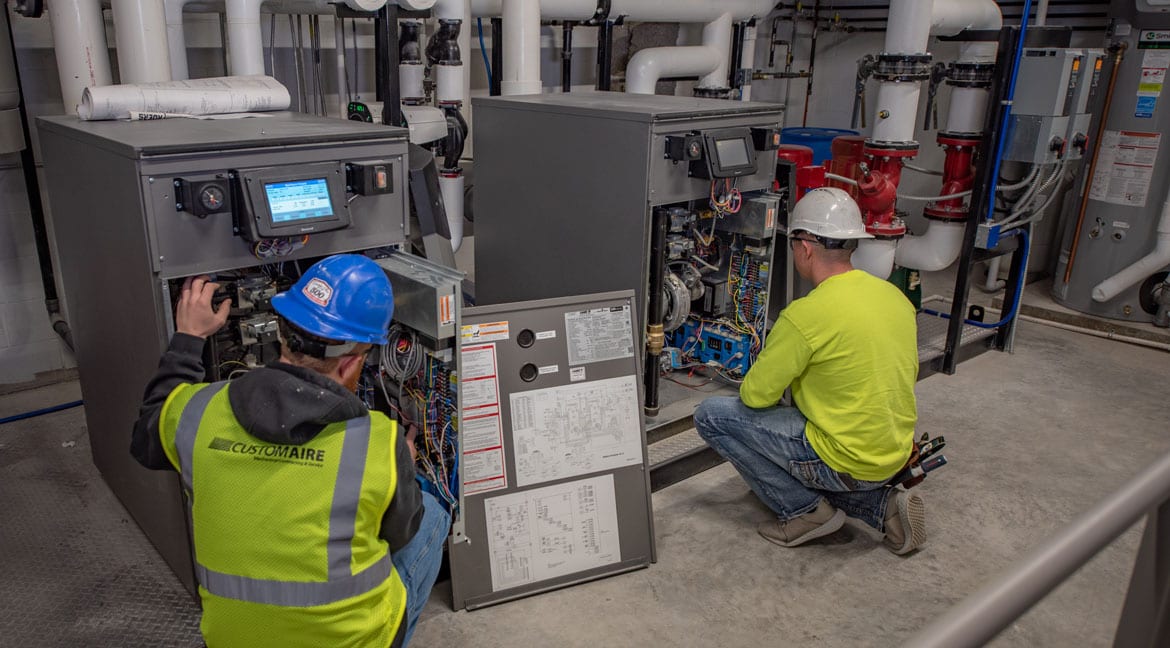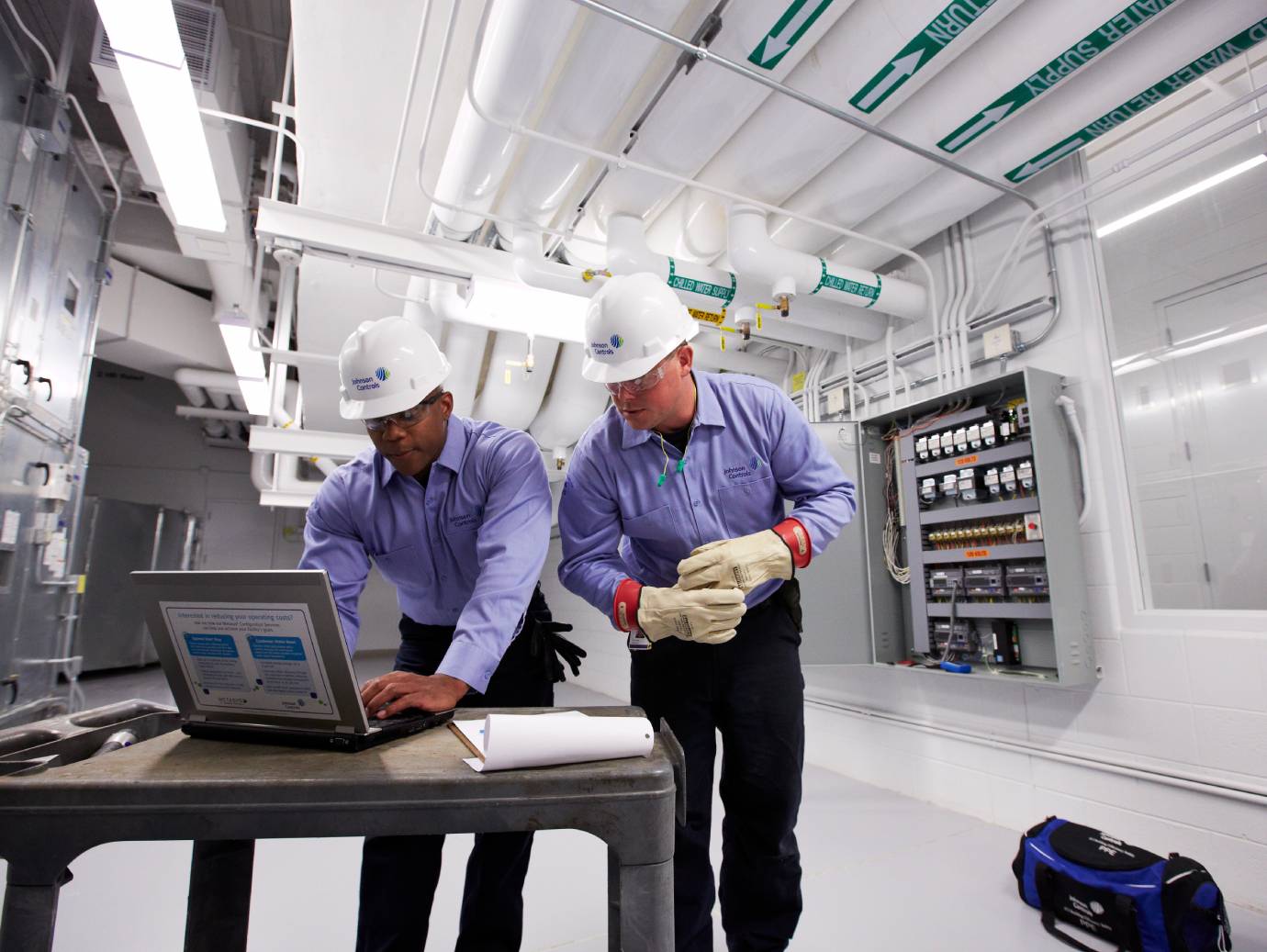Everything You Should Check During heat pump service
Just How a Heatpump and Furnace Collaborate to Optimize Your Home's Home heating Performance
Comprehending how a heatpump and furnace collaborate is necessary for house owners seeking efficient heating options. Each system has its strengths, supplying a well balanced approach to home convenience. The heatpump stands out in moderate temperature levels, while the furnace delivers quick warmth throughout extreme cold. This harmony not just reduces energy expenses however additionally boosts the lifespan of both appliances. What factors influence this collaboration, and exactly how can property owners optimize their advantages?
Comprehending Heat Pumps: Exactly How They Work
Although many individuals may be not familiar with their inner workings, heatpump play a crucial duty in contemporary heating systems. These tools run by transferring warmth from one area to another, using the concepts of thermodynamics. In cooler months, a heatpump essences heat from the outside air, ground, or water, and transfers it inside your home to heat the space. Alternatively, during warmer months, it can reverse the process, working as an a/c by removing heat from inside to the outside.Heat pumps include an evaporator, development, condenser, and compressor shutoff. The refrigerant within the system soaks up warm as it vaporizes at reduced temperature levels and pressures. The compressor then increases the pressure and temperature level of the cooling agent, allowing it to launch heat as it condenses. This reliable process can considerably lower power intake contrasted to conventional home heating methods, making heatpump a lasting choice for climate control in homes.
The Duty of Furnaces in Home Home Heating
Heaters play a crucial function in home heating by giving a reliable source of warmth throughout the colder months. They operate by generating warmth with burning or electric resistance, distributing it throughout the home via ducts or glowing systems. The effectiveness of a furnace is often gauged by its Annual Gas Use Performance (AFUE) score, which shows just how successfully the system converts gas into heat.Furnaces can utilize numerous power resources, including all-natural gas, electrical energy, oil, or gas, permitting home owners to pick the most ideal choice for their needs. Unlike warmth pumps, which might battle in extreme cool, furnaces maintain regular efficiency, guaranteeing that indoor temperature levels remain comfy no matter exterior conditions. In addition, contemporary heaters usually come outfitted with advanced modern technology, such as clever thermostats and variable-speed blowers, improving their performance and responsiveness. This flexibility makes heating systems an essential part in all-encompassing home heating techniques.

Benefits of Using Both Systems Together
Incorporating the toughness of both heating systems and warmth pumps can cause a much more effective and reliable home heating solution. Making use of both systems permits home owners to make use of the heatpump's energy effectiveness during milder temperature levels while counting on the heating system for even more extreme cold conditions. This twin strategy can greatly reduce power costs, as warmth pumps eat much less electrical power than conventional home heating approaches when temperatures are moderate.Additionally, using both systems with each other can enhance convenience levels in the home. Heatpump can give consistent, also heating, while furnaces can swiftly raise ambient temperature levels when needed. Moreover, the combination of both systems can prolong the life expectancy of equipment by reducing damage on each unit, as they share the workload. Ultimately, home owners can enjoy a well balanced, affordable home heating remedy that changes seamlessly to varying weather, ensuring a warm and inviting home throughout the winter season.
How Warmth Pumps and Furnaces Complement Each Various Other
When house owners incorporate heatpump and furnaces, they produce a complementary heating unit that maximizes effectiveness and convenience. Warmth pumps operate by transferring heat from the outdoors air or ground, making them highly efficient in moderate environments. They excel during milder temperatures, giving affordable heating. Conversely, furnaces generate warm through combustion or electric resistance, delivering strong, immediate warmth during extreme cool conditions.The mix of these 2 systems enables for dynamic changes based upon temperature variations. Throughout warmer months or milder winter days, the heatpump can take the lead, conserving energy and decreasing prices. As temperature levels decline, the furnace can effortlessly engage, ensuring consistent warmth throughout the home. This synergy not just optimizes power use however likewise enhances the lifespan of both systems, as each unit runs within its excellent efficiency variety. Together, they develop a balanced environment that adapts to differing climate demands.
Optimizing Effectiveness: Tips for Homeowners
Home owners can enhance their home heating efficiency through numerous practical approaches. Establishing a routine upkeep timetable, incorporating smart thermostat Bonuses technology, and executing effective insulation and securing solutions are essential actions. These measures not just improve convenience but likewise minimize power expenses.
Normal Upkeep Schedule
To ensure maximum heating efficiency, developing a normal upkeep routine is vital for any type of home. Homeowners ought to focus on regular evaluations of both warmth pumps and heaters to determine peak efficiency. This consists of altering air filters each to three months, as stopped up filters can greatly minimize effectiveness. Additionally, scheduling specialist maintenance a minimum of yearly permits specialists to recognize and address prospective concerns prior to they intensify. Homeowners must additionally clean the heatpump's outside device to stop debris accumulation that can hinder air flow. By sticking to a normal upkeep routine, home owners not just enhance their heating systems' performance yet likewise prolong their life expectancy, resulting in greater comfort and reduced energy expenses throughout the chillier months.
Smart Thermostat Combination
Incorporating a wise thermostat into a home heater can substantially boost energy efficiency, specifically as it enables specific control over temperature level settings. These gadgets can discover the property owner's schedule and choices, immediately readjusting the temperature level to enhance comfort while decreasing power usage. For example, they can heat pump installation ooltewah tn decrease home heating throughout times when the home is empty, reducing unnecessary intake. Numerous smart thermostats also supply real-time power usage data, making it possible for house owners to make informed choices concerning their heating behaviors. Furthermore, remote gain access to using smart device applications enables customers to change setups from anywhere, making sure the home is warm upon return. Overall, wise thermostat assimilation not only boosts convenience yet significantly adds to energy financial savings and effectiveness.
Insulation and Securing Solutions
Smart thermostats play a vital role in energy performance, but their efficiency can be substantially enhanced by correct insulation and sealing remedies. Homeowners ought to focus on protecting floors, wall surfaces, and attic rooms to lessen heat loss. Top quality insulation materials, such as spray foam or fiberglass, can considerably boost thermal resistance. Additionally, securing voids around air ducts, windows, and doors prevents chilly air seepage and heat getaway. Weatherstripping and caulking are reliable approaches for addressing these leaks - furnace replacement. Normal examinations for air leakages, in addition to making use of blower door tests, can assist identify problem locations. By investing in insulation and securing, homeowners can enhance the performance of their heating systems, eventually leading to reduced energy usage and reduced utility bills
Usual Misconceptions Regarding Warmth Pumps and Furnaces
What mistaken beliefs surround heatpump and heating systems? Numerous individuals mistakenly believe that warm pumps are ineffective in cooler climates. In truth, modern warmth pumps are created to operate efficiently also in low temperatures, providing reliable heating throughout wintertime. Another usual myth is that furnaces are constantly a lot more efficient than heatpump. Nonetheless, this relies on the particular power sources and effectiveness rankings of the units concerned. Some may additionally believe that making use of both systems simultaneously is unneeded, but in truth, this mix can enhance home heating efficiency, specifically during extreme weather. Furthermore, individuals typically assume that heatpump require continuous upkeep, when in reality, they have similar upkeep needs to typical heating unit. By unmasking these myths, house owners can make more enlightened decisions regarding their home heating options, eventually leading to enhanced convenience and power performance in their homes.
Upkeep Factors To Consider for Combined Equipments

Regularly Asked Concerns
Can Warmth Pumps Work Properly in Incredibly Cold Climates?
Warm pumps can have a hard time in exceptionally cold climates as a result of minimized efficiency and heat extraction constraints. Nonetheless, improvements in modern technology have resulted in designs developed for far better performance in such conditions, enhancing their feasibility in severe settings.
How Long Do Warm Pumps and Furnaces Usually Last?
Heat pumps generally last 15 to 20 years, while heaters have a lifespan of 15 to 30 years. Normal maintenance can prolong their longevity, guaranteeing reliable procedure and reducing the demand for premature substitutes.

What Is the Average Cost of Installing Both Solutions?
The ordinary cost of installing both a heatpump and a furnace typically varies in between $5,000 to $10,000 - furnace replacement. Elements affecting this expense consist of system size, installation intricacy, and regional labor prices
Are There Tax Motivations for Utilizing Energy-Efficient Home Heating Solutions?
Lots of property owners ask about tax obligation motivations for energy-efficient furnace. Different government and state programs typically offer discounts or debts, encouraging the fostering of sustainable modern technologies to reduce power usage and advertise environmental duty.
How Do I Select the Right Size Heat Pump and Furnace?
Picking the ideal size heatpump and heater involves computing the home's square video, taking into consideration insulation top quality, and assessing local climate. Consulting a professional that site can ensure excellent system efficiency and energy effectiveness based upon certain requirements. furnace replacement. Comprehending how a heat pump and heating system job together is crucial for property owners looking for effective heating services. In colder months, a warm pump essences heat from the outdoors air, ground, or water, and transfers it inside to heat the living area. When house owners integrate heat pumps and heating systems, they produce a complementary home heating system that optimizes effectiveness and comfort. Warm pumps operate by transferring heat from the outdoors air or ground, making them extremely efficient in modest climates. Warmth pumps can have a hard time in exceptionally cool climates due to minimized efficiency and warmth extraction constraints